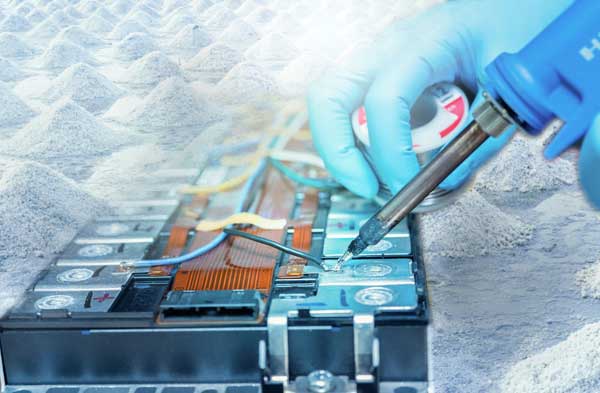The future of energy storage is shifting towards electric power, and the demand for batteries is at an all-time high. However, the dominance of lithium-ion batteries is facing challenges due to supply constraints and cost considerations. As a result, companies and countries are exploring alternative battery chemistries. Sodium-ion batteries have emerged as a viable solution, offering similar designs to lithium-ion batteries while leveraging the advantages of sodium. In this article, we delve into the world of sodium-ion batteries, exploring their potential, advantages, challenges, and their role in transforming the energy storage landscape.

Sodium-ion Batteries: An Introduction to the Sustainable Energy Revolution
In this section, we introduce sodium-ion batteries, highlighting their composition, similarities to lithium-ion batteries, and the chemical processing required to harness sodium as a feedstock. We emphasize the abundance and cost-effectiveness of sodium, making it an attractive alternative to lithium. Additionally, we touch upon the projected market value of sodium-ion batteries by 2033.
Advantages and Unique Features of Sodium-ion Batteries
Here, we explore the distinctive advantages of sodium-ion batteries. While they may not match the range of lithium-ion batteries in electric vehicles, they offer cost-saving benefits by eliminating the need for expensive raw materials such as cobalt, copper, lithium, and graphite. Moreover, we discuss their safety profile, showcasing how sodium-ion batteries pose minimal safety hazards and eliminate the risk of fire.
Sodium-ion Batteries: Key Players and Commercialization Efforts
This section focuses on prominent companies driving the commercialization of sodium-ion batteries. We discuss the involvement of CATL, SVOLT, Tiamat, Faradian, and Natron Energy, highlighting their contributions and plans for incorporating sodium-ion batteries in various applications. We also touch upon the resurgence of interest in sodium-ion technology following CATL’s investment in 2021.

Sodium-ion Batteries vs. Lithium-ion Batteries: A Comparative Analysis
Drawing a comprehensive comparison, we examine sodium-ion batteries alongside their lithium-ion counterparts. We discuss factors such as energy density, cycle life, temperature range, and safety. While sodium-ion batteries may have lower energy density and require larger sizes, we emphasize their promising future and potential to complement lithium-ion technology in specific market segments.
Overcoming Challenges and Scaling Up Sodium-ion Battery Production
In this section, we explore the challenges faced by sodium-ion battery manufacturers, particularly in terms of energy density and scaling up production. We highlight the ongoing efforts of companies like Faradian and Natron Energy to overcome these challenges and establish global-scale manufacturing capabilities. We discuss their partnerships, research and development initiatives, and plans for future expansion.
Conclusion
As the world transitions from fossil fuels to green energy, sodium-ion batteries offer a promising solution for energy storage. Their abundance, cost-effectiveness, and improved safety profile make them an attractive alternative to lithium-ion batteries. While sodium-ion batteries still face challenges in terms of energy density and scaling up production, ongoing research and development efforts are driving progress in these areas.
With key players like CATL, SVOLT, Tiamat, Faradian, and Natron Energy investing in sodium-ion battery technology, commercialization efforts are gaining momentum. These batteries have the potential to revolutionize various sectors, including electric vehicles, renewable energy storage, and grid-level applications.
Looking ahead, continued advancements in sodium-ion battery technology and increased investments in manufacturing capabilities will be crucial for their widespread adoption. As researchers and industry leaders work together to overcome challenges and optimize performance, sodium-ion batteries are poised to play a significant role in the future of energy storage, contributing to a more sustainable and efficient energy landscape.
Remember to check out our other articles on the latest developments in energy storage and emerging technologies that are shaping the future of clean energy.
